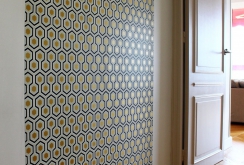Sauna and hammam at home: design features
The bath exists to maintain and restore health and strength, as well as to relax the body and soul. There are many varieties of baths; recently, the most popular are the sauna and the hammam. How do they differ and for whom what is more suitable - few know. A short review will help you figure out what exactly you need.Features of the Finnish and Turkish baths
The Finnish bath is usually a large room where a TV is installed, music plays, there are various entertainment and wellness treatments. Having warmed up in the steam room, you can swim in the pool with water at room temperature. The stove in the sauna is most often stone, but it can also be electric with a temperature controller. The temperature in the Finnish bath rises to 200 degrees, the humidity reaches only 15 percent. With such dryness, heat is almost not felt, sweat instantly disappears. Hammam differs from a sauna mainly in temperature conditions (up to 45 degrees) and degree of humidity. It depends on the materials and waterproofing. Also, unlike a sauna, cosmetic procedures in a hammam have a slightly different character. The most important difference of the Turkish bath is the availability of a steam generator. The quantity and quality of steam and the comfort of visitors depend on it. There are installations capable of automatically generating clean steam from tap water. Steam generators are installed in a separate room and steam is supplied through the steam line. Models of steam generators and their cost can be found in the catalogs of online stores.Materials for sauna and hammam
Properly selected materials contribute to a comfortable and safe pastime in the steam room. Materials for indoor saunas and hammams are used different:- Sauna. Basically, for a steam room in a sauna, natural wood is used, which perfectly retains heat.When heated, wood releases healing substances filled with fragrant aromas. Used for walls, shelves and ceilings of the sauna cedar, alder, linden, abachi, pine. Wood is easily processed, has a beautiful texture, is resistant to deformation, serves for a long time, has disinfecting properties, and remains attractive for a long time. Staying in a sauna improves immunity, fights colds, allergies, treats pulmonary diseases, and normalizes metabolism.
- Hamam. The hamam environment favorably affects both the body and the psychological state. In the hammam, compared to the sauna, wood materials are not used. Basically, marble is used to finish the hammam. This is one of the most durable natural materials. Talcochloride is sometimes used, also durable, but with better thermal capacity. In addition, the hammam can be built of small mosaics - smalt, which is characterized by a variety of colors and sizes. The most budgetary material is also used - ceramic tiles. It is not as durable as marble, but it has many options and allows you to create all kinds of options.
Shape difference
The Finnish sauna is similar in appearance to a Russian bath. Its shape is usually rectangular, less often square. The situation inside and outside the bath is somewhat more modest and simpler than in a hammam. Shelves and deck chairs are made of natural wood. Unlike saunas, Turkish baths resemble a chic palace, certainly there is a dome. Inside, all furniture is made of stone. The classic hammam has a round shape with beautiful mosaics and stained glass windows. The interior is very beautiful, all elements are decorated with decorative finishes and complemented by various architectural delights.Humidity difference
For creating the optimal microclimate, the humidity in the room is responsible. Steam injection is created by various methods:- Hamam. In a steam bath, steam appears after generators or water boilers begin to operate, in which the water is heated to a boil. It is also possible heating of stone floors, walls, deck chairs by pouring hot water on them, turning into light steam.
- Sauna. The Finnish bath house has a very low degree of humidity. You can increase humidity by adding a certain amount of water to the heater, which reaches a temperature of 250 degrees.
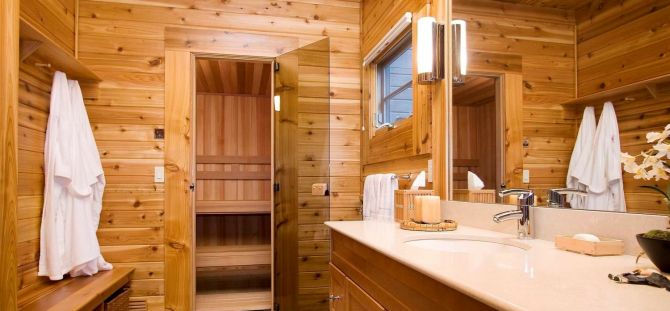
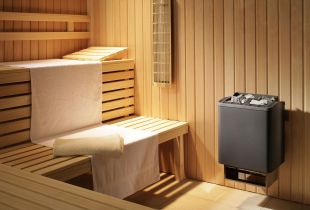 Steam generators for saunas, hammams and baths: features
Steam generators for saunas, hammams and baths: features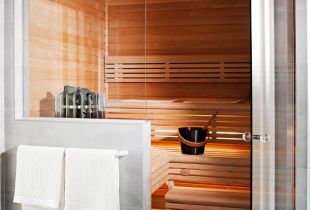 Doors for a sauna: design feature (20 photos)
Doors for a sauna: design feature (20 photos)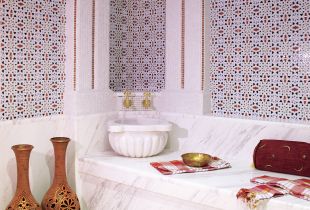 Personal hammam at home: oriental subtleties (20 photos)
Personal hammam at home: oriental subtleties (20 photos)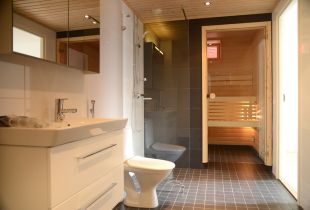 Sauna in the apartment (50 photos): design of a room for traditional relaxation
Sauna in the apartment (50 photos): design of a room for traditional relaxation





